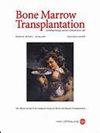NPM1 突变急性髓性白血病的分子可测量残留疾病监测和移植适应症。
IF 4.5
2区 医学
Q1 HEMATOLOGY
引用次数: 0
摘要
NPM1突变型急性髓性白血病(AML)约占所有AML病例的30%,根据欧洲白血病网的分层,主要分为良好风险和中度风险。然而,有些患者对初始强化化疗反应不佳或最终复发。NPM1 基因突变很常见,在早期复发时一般比较稳定,而且是急性髓细胞性白血病的特异性基因突变,这些特点使其成为监测可测量残留疾病(MRD)的理想目标。在治疗过程中,通过分子分析进行MRD监测,可为首次缓解的NPM1突变急性髓细胞性白血病患者中的异基因干细胞移植(HCT)提供参考,这些患者同时伴有高风险突变,尤其是FLT3-ITD,以及未达到规定分子里程碑的有利风险患者。在这篇综述中,我们评估了 MRD 监测在 NPM1 突变急性髓细胞性白血病中的预后作用,以及它作为一种预测性生物标记物在完善风险分层和为治疗决策提供信息方面的应用。我们探讨了这种急性髓细胞性白血病亚组患者接受造血干细胞移植前 MRD 阳性对接受造血干细胞移植后预后的影响,以及与造血干细胞移植相关的因素(如调理强度)会如何影响这种风险。本文章由计算机程序翻译,如有差异,请以英文原文为准。

Molecular measurable residual disease monitoring and transplant indications in NPM1 mutated acute myeloid leukemia
NPM1 mutated acute myeloid leukemia (AML) comprises roughly 30% of all AML cases and is mainly classified as favorable or intermediate-risk according to the European Leukemia Net stratification. Some patients, however, either have a poor response to initial intensive chemotherapy or ultimately relapse. NPM1 mutations are common, generally stable at early relapse and AML specific, features which make them ideal targets for measurable residual disease (MRD) monitoring. MRD monitoring via molecular analysis during the course of treatment can inform the role of allogeneic stem cell transplantation (HCT) in first remission in patients with NPM1 mutated AML with high-risk co-occurring mutations, particularly FLT3-ITD, and in favorable risk patients who do not achieve defined molecular milestones. In this review, we evaluate the prognostic role of MRD monitoring in NPM1 mutated AML and its use as a predictive biomarker to refine risk stratification and inform decision making regarding treatment. We explore the impact of pre-HCT MRD positivity on post-HCT outcomes in this AML subset, and how HCT-related factors such as conditioning intensity may influence this risk.
求助全文
通过发布文献求助,成功后即可免费获取论文全文。
去求助
来源期刊

Bone Marrow Transplantation
医学-免疫学
CiteScore
8.40
自引率
8.30%
发文量
337
审稿时长
6 months
期刊介绍:
Bone Marrow Transplantation publishes high quality, peer reviewed original research that addresses all aspects of basic biology and clinical use of haemopoietic stem cell transplantation.
The broad scope of the journal thus encompasses topics such as stem cell biology, e.g., kinetics and cytokine control, transplantation immunology e.g., HLA and matching techniques, translational research, and clinical results of specific transplant protocols. Bone Marrow Transplantation publishes 24 issues a year.
 求助内容:
求助内容: 应助结果提醒方式:
应助结果提醒方式:


